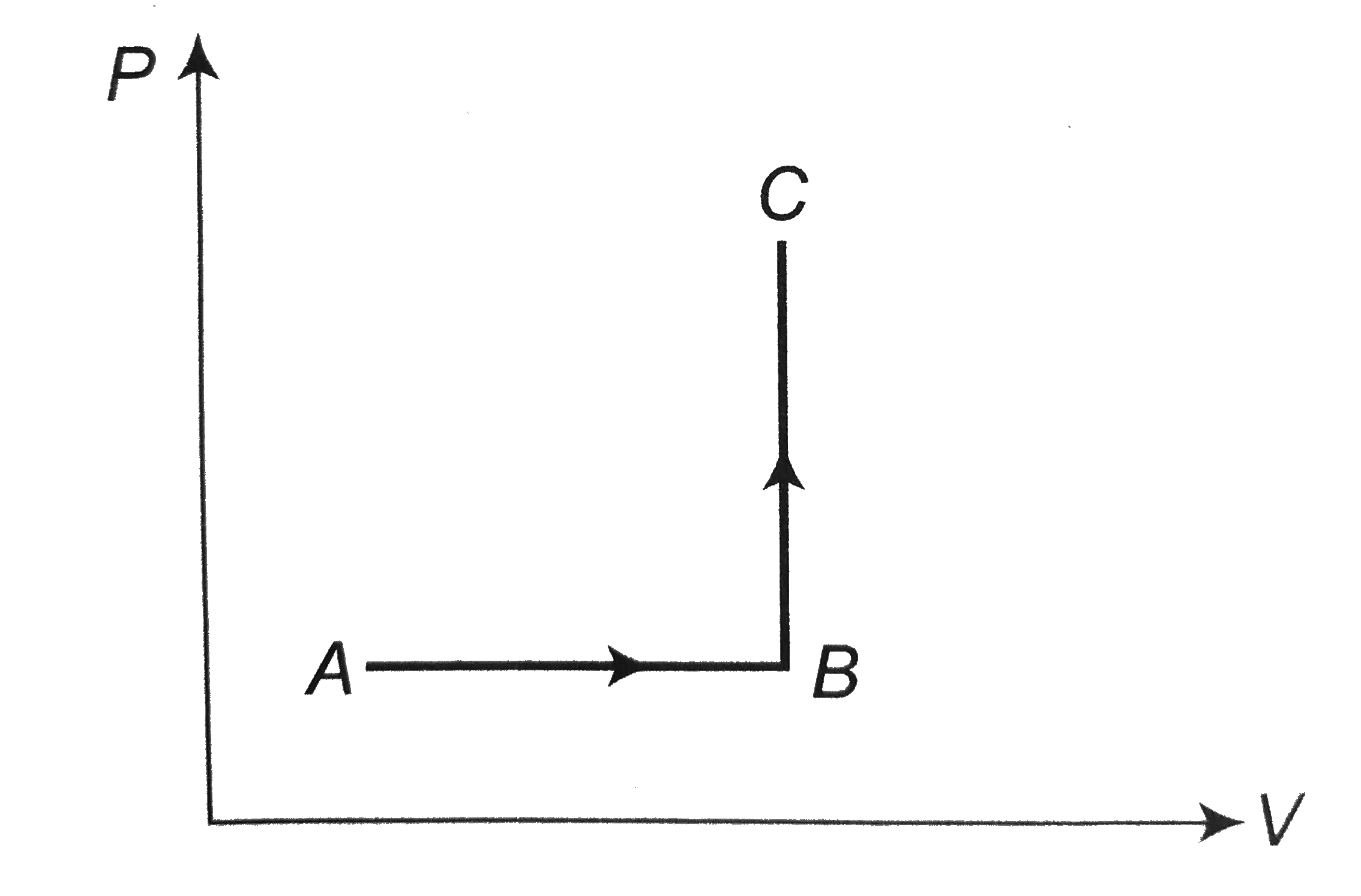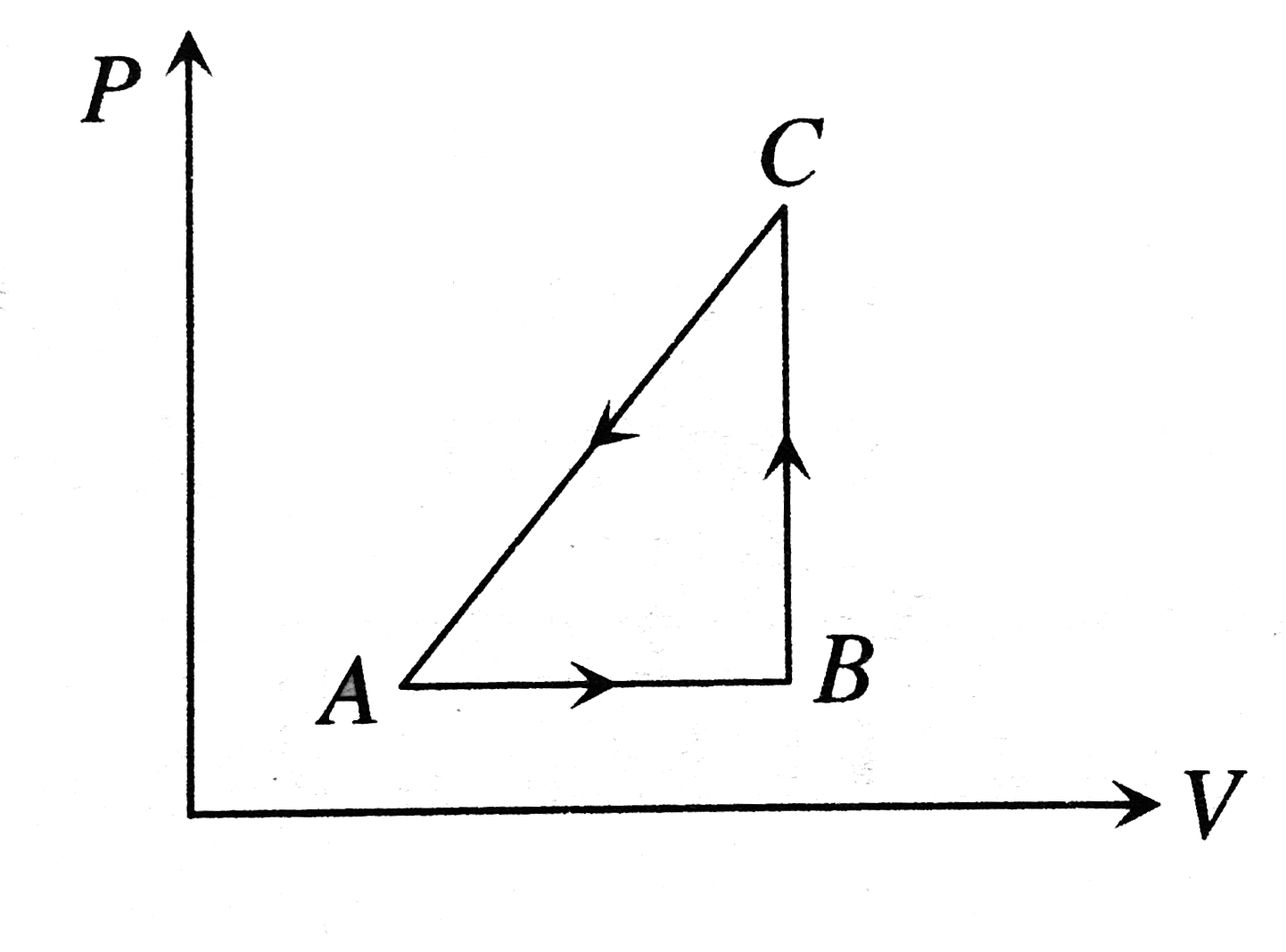180 J of work is done on the system and at the same time 120 J of heat is given out. What is the change in the internal energy?
To solve the problem, we will use the first law of thermodynamics, which states:
ΔU=Q+W
Where:
- ΔU is the change in internal energy,
- Q is the heat added to the system (positive if heat is absorbed, negative if heat is released),
- W is the work done on the system (positive if work is done on the system, negative if work is done by the system).
1. Identify the values given in the problem:
- Work done on the system, W=180J (since work is done on the system, it is positive).
- Heat given out by the system, Q=−120J (since heat is released, it is negative).
2. Substitute the values into the first law of thermodynamics equation:
ΔU=Q+W
ΔU=(−120J)+(180J)
3. Calculate the change in internal energy:
ΔU=−120+180
ΔU=60J
4. State the final answer:
The change in internal energy, ΔU, is +60J.
Final Answer:
ΔU=60J
- ΔU is the change in internal energy,
- Q is the heat added to the system (positive if heat is absorbed, negative if heat is released),
- W is the work done on the system (positive if work is done on the system, negative if work is done by the system).
- Work done on the system, W=180J (since work is done on the system, it is positive).
- Heat given out by the system, Q=−120J (since heat is released, it is negative).
ΔU=Q+W
ΔU=(−120J)+(180J)
ΔU=−120+180
ΔU=60J
The change in internal energy, ΔU, is +60J.
ΔU=60J
Similar Questions
160 J of work is done on the system and at the same time 100 J of heat is given out. What is the change in the internal energy ?
View SolutionThe first law of thermodynamics for a closed system is dU = dq + dw, where dw = dwpv+dwnon-pv. The most common type of wnon-pv is electrical work. As per IUPAC convention work done on the system is positive.
A system generates 50 J electrical energy, has 150 J of pressure-volume work done on it by the surroundings while releasing 300 J of heat energy. What is the change in the internal energy of the sytem?
View Solution
Knowledge Check
A system absorbs 50 kJ heat and does 20 kJ of work. What is the net change in the internal energy of the system ?
AIncrease by 30 kJBDecrease by 30 kJCIncrease by 70 kJDDecrease by 70 kJ
400 J of work is done on a gas to reduce its volume by compression adiabatically. What is the change in internal energy of the gas?
View SolutionThe P−V diagram of a system undergoing thermodynamic transformation is shown in figure. The work done by the system in going from A→B→C is 30J and 40J heat is given to the system. The change in internal energy between AandC is

View SolutionThe first law of thermodynamics for a closed system is dU = dq + dw, where dw = dwpv+dwnon-pv. The most common type of wnon-pv is electrical work. As per IUPAC convention work done on the system is positive.
A system generates 50 J of electrical energy and delivers 150 J of pressure-volume work against the surroundings while releasing 300 J of heat energy. What is the change in the internal energy of the system?
View SolutionThe work done by the system is 8 joule, when 40 joule heat is supplied to it. What is the increases in internal energy of system.
View SolutionThe P−V diagram of a system undergoing thermodynnaic transformation is shown in Fig. The work done on the system in going from A→B→C is 50J and 20cal heat is given to the system. The change in internal erergy between A and C is

View SolutionA system is provided 50J of heat and work done on the system is 20J. What is the change in the internal enegry?
View SolutionA system is provided 50J of heat and work done on the system is 20J. What is the change in the internal enegry?
View Solution